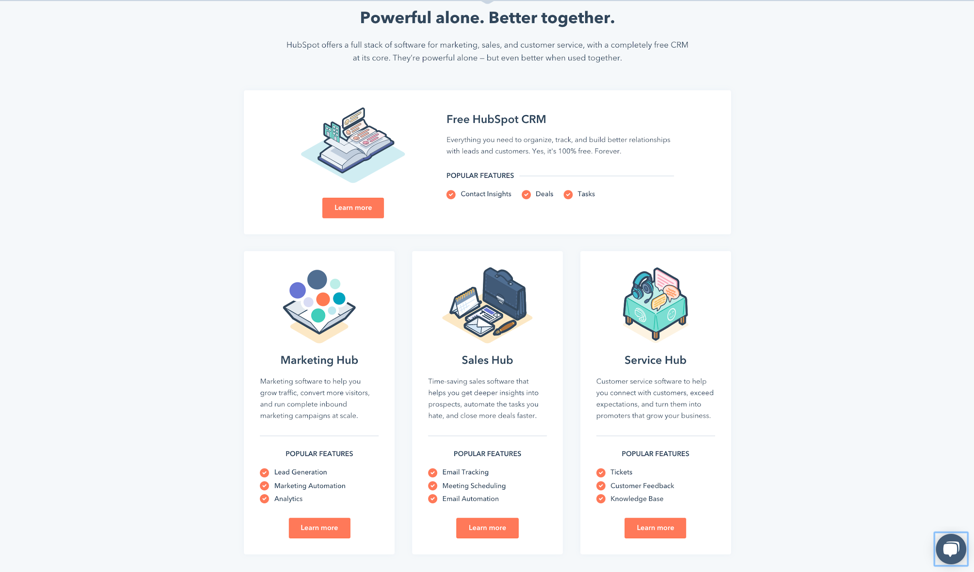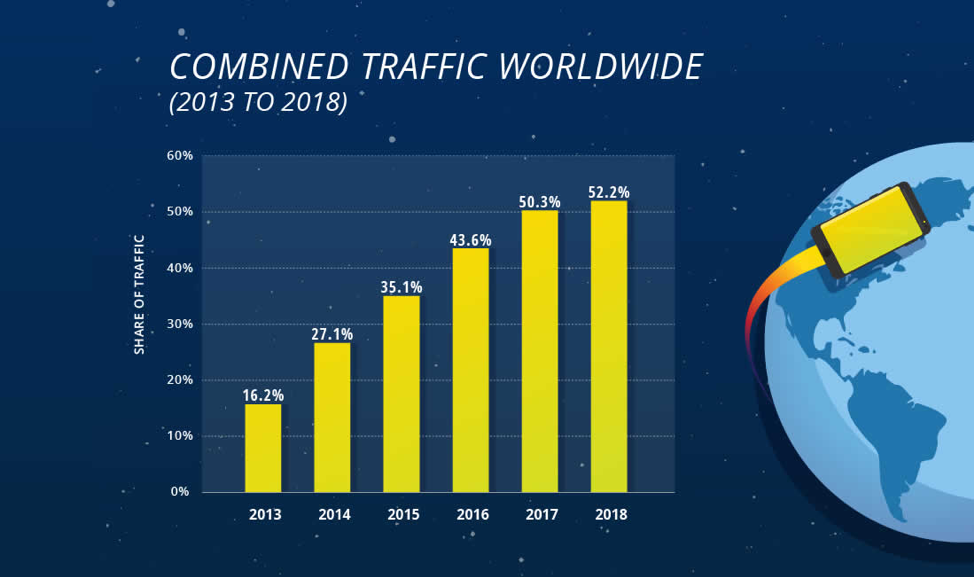10 Questions to Ask Before Launching Your Next Website Redesign

10 Questions to Ask Before Launching Your Next Website Redesign
Contributed ContentIf you’re looking to redesign your website, you’ll need to think about more than just the graphics.
Are you preparing to redesign your business website? If so, you’re likely experiencing a wide spectrum of emotions: excitement, anticipation, anxiety, fear — or all of the above and more. We promise you’re not alone. In fact, the average brand redesigns its website every 18–30 months.
The pressure around site redesigns is understandable, as your website is one of your most important assets in today’s digital-focused business landscape. This isn’t a project you can rush into — there are many questions you must answer before you even start to plan your new site.
Here are 10 questions you should ask yourself before beginning your next site redesign. While this list is far from comprehensive, it provides many key points to consider to ensure your new website is a success. Let’s get into it!
10 Common Questions to Consider Before Launching a Site Redesign
- Is a complete website overhaul necessary?
- What business goals do I want my new website to achieve?
- Who is my website for?
- How will I avoid losing my current traffic?
- What are the “must-haves” for my new website?
- What is a feasible timeline to complete the redesign?
- Will my new site impact my brand?
- Who will be responsible for each aspect of the redesign?
- Will my new website be optimized for mobile?
- How will I measure success?
1. Is a Complete Website Overhaul Necessary?
Brands often make the mistake of thinking they need to overhaul their website while lacking a clear purpose.
For example, a brand’s current website could work just fine and generates the results they’re looking for, but it’s been a while since they’ve redesigned it. Maybe one of their competitors just launched a new site, and they’re starting to suffer from “shiny new toy” syndrome.
Forgive the cliché, but website redesigns are often a case of “if it isn’t broke, don’t fix it.”
There’s a stark difference between a website that needs a complete redesign and a website that performs well but requires a few minor updates.
We don’t suggest you leave your site as-is for years and years. But, make sure you have a reason for redesigning your site beyond the fact that you’re bored of looking at it.
2. What Business Goals Do I Want My New Website to Achieve?
So you’ve determined a valid reason to redesign your website. Now it’s time to get more specific.
Rather than looking at what your existing site is lacking, instead consider what goals your new website will accomplish. Do you want to generate more organic traffic? Boost lead generation? Drive brand awareness?
Your answer to that question might be “all of the above.” After all, who doesn’t want to generate more traffic and leads or increase brand awareness? But, it’s important to zero in on the one or few primary goals of your website redesign. This goal will drive all of your decision-making throughout the redesign process.
Let’s say lead generation is your top priority. Before you start developing fancy new pages, you’ll need to determine how each change will impact the number of leads you generate. This primary goal will influence everything from your site navigation to the structure of your landing pages.
Without a clear objective, you run the risk of making ill-advised decisions and negatively impacting your business goals without knowing it.
3. Who Is My Website for?
It’s easy to get caught up in what your employees and executives want to feature on your new site. But whose opinion matters most? Your target audience and current customers really determine the success of your website.
No matter how much you love the way your new site looks, it’ll only be a success if it appeals to your target audience.
What do they want to see on your homepage? What imagery and messaging do they respond favorably to? Will they appreciate a neat, professional site design or something more creative?
In order to answer these questions and more, consult your buyer personas early on in the planning process. In case you’re unfamiliar, buyer personas are semi-fictional profiles of your ideal buyers. These profiles should provide insights into your target customer’s wants, needs, interests, and preferences.
And, if you still feel like you need additional insight, we recommend speaking directly with some of your most loyal customers. They may provide you with ideas you hadn’t considered, and their opinions are likely shared by many others in your customer base.
Let’s look at an example of a brand catering their website to their audience. HubSpot, for example, has a simple homepage that clearly states the different “hubs” HubSpot offers.

The site doesn’t pop out of the screen at you. But, it succeeds by keeping its focus on its audience: the people its products are for. The features HubSpot highlights are the ones their target audience cares about: the marketing hub, sales hub, and service hub.
These details are what separate an effective website from a bad one — much more so than the bells and whistles that many brands focus on when redesigning their website.
4. How Will I Avoid Losing My Current Traffic?
When you launch a redesign, you’re doing much more than simply slapping a new coat of paint on your website. Changing your site may result in a number of unforeseen consequences, particularly in regards to your search engine traffic.
If your site doesn’t garner much search engine traffic, the impact might seem negligible. But, if you’ve spent years building a successful SEO strategy, it’s imperative to prioritize SEO considerations as you plan your redesign.
Your new site might look great and earn you a pat on the back from your executives, but if it’s not strategically optimized for SEO, it’ll spell disaster in the long-term. We recommend you involve a dedicated SEO specialist from day one of to ensure you cover all your bases during the redesign.
5. What Are the “Must-Haves” for My New Website?
Let’s paint a picture (fair warning, this might bring back unpleasant memories for anyone who’s been involved in a redesign in the past):
You’re approaching your deadline to launch the new site, and everything’s going smoothly. Then, an executive chimes in and requests a flashy animation for the homepage. Someone else wants the product pages to feature interactive videos.
While your team scrambles to meet those requests, the CEO chimes in and says he wants less gimmicky animations and more candid photographs of employees and customers.
Before you know it, you’ve added and removed so many things that your new site bears no resemblance to your initial mockups.
This scenario is every bit of the nightmare it sounds like, but it’s possible to avoid.
Before you start your site redesign, create a master list of “must-haves” — in other words, the features your new site will include no matter what. From there, you’ll have a bit of leeway to field new ideas and last-minute requests, but not so much leeway that you run the risk of letting the project go entirely off the rails.
6. What Is a Feasible Timeline to Complete the Redesign?
Realistic deadlines are crucial for any major project, but none more so than a website redesign. If you set a deadline and lack the resources to meet it, you’ll cut corners, make mistakes, rush important decisions, and, in all likelihood, end up launching your site before it’s truly ready.
It’s great to set a high bar and step up to a challenge, but we caution against setting a hard deadline unless you’re 100% sure your team can meet it. Outline a thorough timeline that covers every step of the redesign process, and give yourself enough time to hit each deadline comfortably.
7. Will My New Site Impact My Brand?
While the two often go hand in hand, it’s important to distinguish between a redesign and a rebrand. It’s even more important to consider how your redesign will impact your branding and the way your audience perceives it.
Let’s say your company sells recruiting software to primarily B2B organizations. The branding on your current site strikes a balance between professional (as you’re marketing to a B2B audience) and personal (as it’s important to highlight the human element of the recruiting services you provide).
What would happen if you took your new website in an entirely different direction, including a bunch of flashy colors, cartoonish designs, and “innovative” multimedia elements?
You’d be significantly altering the perception of your company, and branding is all about perception.
If your company is heading in a new direction, a radical shift might be necessary. But if your initiative is to create a better website, it’s best to exercise caution. Plan your redesign with your brand and audience in mind, with a firm understanding of how each will be affected by the changes you make to your site.
8. Who Will Be Responsible for Each Aspect of the Redesign?
You’ll likely have a large team of employees working on the redesign project — designers, web developers, content writers, SEO specialists, and project managers to name a few.
It’s important to assign ownership of each part of the process to a specific individual or team of individuals.
While the redesign is a collaborative, collective effort, each employee working on it should have their own set of objectives and responsibilities. These should be communicated to anyone who may be involved in the process. Otherwise, you’re susceptible to communication breakdowns, confusion, and duplication of efforts.
9. Will My New Website Be Optimized for Mobile?
Considering the fact that over mobile users account for more than 55% of web traffic, the answer to this question should be a resounding “yes.”
Mobile continues to outpace desktop as the source of worldwide web traffic.

Compared to 16.2% in 2013, mobile traffic has exceeded desktop in 2017, making up about half (50.3%) of all site traffic worldwide. The number has risen to 52.2% in 2018.
Mobile devices are no longer secondary considerations when designing a website. It’s essential that your new site performs as well on a customer’s phone as it does on their computer.
Because users interact with your site differently on mobile than they do on desktop, you’ll need to consider implementing mobile-specific changes such as shorter forms, a streamlined layout, and more.
10. How Will I Measure Success?
So you launched your new website and managed not to break it completely or tank your web traffic. Time to celebrate, right?
Not so fast. This won’t be the last time you tweak your website, so it’s important to meticulously measure your success in order to make the right website improvements moving forward.
The metrics you track will depend on the specific goals you set prior to the redesign but should cover everything from traffic growth, sales, and brand awareness to anything else that contributes to the growth of your business.
Redesigning Your Website Is an Involved Process
There’s no way around it: redesigning your website raises a number of challenges and almost never goes exactly as planned. You’ll hit roadblocks, make mistakes, and experience (hopefully brief) moments of panic.
But, at the end of the day, a site redesign is only as difficult as you make it.
Prepare as thoroughly as possible and ask yourself the right questions before starting the project, and you’ll be able to build a fantastic new site that satisfies your audience and helps to grow your business.
